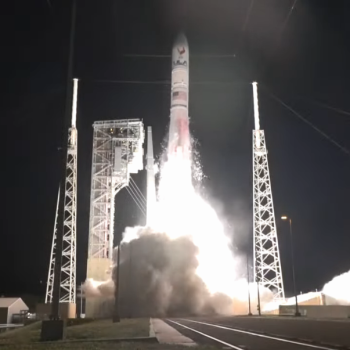Peregrine only has hours left, its fuel leaking away
According to a number of recent updates by Astrobotic, its Peregrine lunar lander only only a few more hours of life left, its fuel leaking away due to the failure of a valve to close inside its oxygen tank.
Astrobotic’s current hypothesis about the Peregrine spacecraft’s propulsion anomaly is that a valve between the helium pressurant and the oxidizer failed to reseal after actuation during initialization. This led to a rush of high pressure helium that spiked the pressure in the oxidizer tank beyond its operating limit and subsequently ruptured the tank.
The company also noted that the Vulcan rocket did no harm to the spacecraft during launch, placing it in the correct orbit. The tank rupture however means it will not land on the Moon, and in fact is likely not going to escape Earth orbit. Sometime in the next day or so the spacecraft will run out of fuel, and at that point it will be fly out of control, its batteries draining because the solar panels will no longer point to the Sun.
How this failure will impact Astrobotic’s next and larger lander, Griffin, remains unknown. It is presently scheduled to land on the Moon in November 2024.
According to a number of recent updates by Astrobotic, its Peregrine lunar lander only only a few more hours of life left, its fuel leaking away due to the failure of a valve to close inside its oxygen tank.
Astrobotic’s current hypothesis about the Peregrine spacecraft’s propulsion anomaly is that a valve between the helium pressurant and the oxidizer failed to reseal after actuation during initialization. This led to a rush of high pressure helium that spiked the pressure in the oxidizer tank beyond its operating limit and subsequently ruptured the tank.
The company also noted that the Vulcan rocket did no harm to the spacecraft during launch, placing it in the correct orbit. The tank rupture however means it will not land on the Moon, and in fact is likely not going to escape Earth orbit. Sometime in the next day or so the spacecraft will run out of fuel, and at that point it will be fly out of control, its batteries draining because the solar panels will no longer point to the Sun.
How this failure will impact Astrobotic’s next and larger lander, Griffin, remains unknown. It is presently scheduled to land on the Moon in November 2024.














